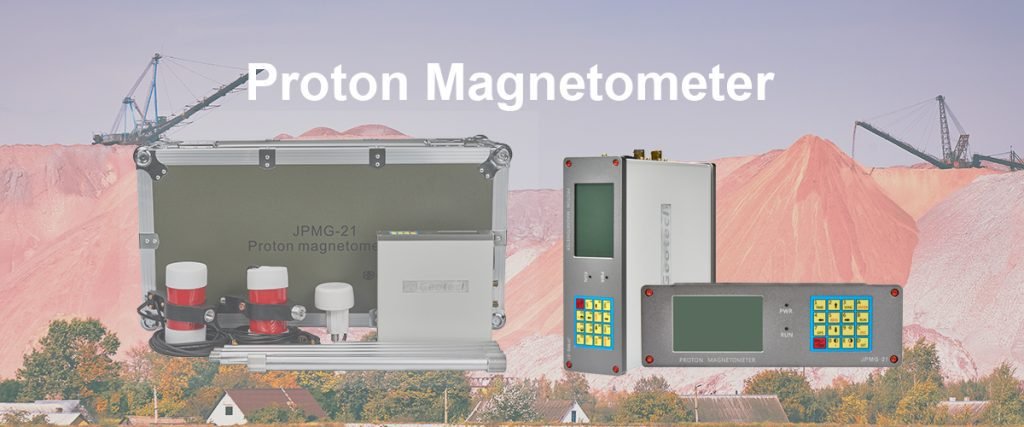Welcome to Geotech!

Proton Precession Magnetometer: Technical Analysis of Polarization to Magnetic Moment
TIPS:In the realm of magnetic field measurement, the Proton Precession Magnetometer stands out. This device, relying on proton polarization and magnetic moment measurement, enables precise magnetic field detection. This article delves into the Proton Precession Magnetometer, exploring how proton polarization initiates the measurement process and how magnetic moment measurement determines the field strength. Uncover the technical details and discover the significance of these two key aspects in enhancing the performance of the Proton Precession Magnetometer.

Ⅰ. Introduction
In the realm of magnetic field measurement, the Proton Precession Magnetometer stands as a pivotal device. It detects magnetic fields through distinctive mechanisms. Ranging from proton polarization to magnetic moment measurement, it encompasses a wealth of technical intricacies. This article delves into analyzing its operational process, explores approaches for enhancing accuracy, and examines calibration procedures, unlocking the technological mysteries of this instrument.
Ⅱ. Basic Principles
1. Physics of Proton Precession
A Proton Precession Magnetometer, also referred to as a proton – spin magnetometer or a nuclear precession magnetometer, functions based on the phenomenon of proton precession. Hydrogen protons possess spin magnetic moments. In the absence of external interference, these moments are randomly distributed. The application of a polarizing magnetic field aligns these moments (a process known as proton polarization or nuclear polarization) — a crucial initial step in the measurement process.
2. Transition from Polarization to Precession
Upon the removal of the polarizing magnetic field, the proton magnetic moments precess around the direction of the geomagnetic field or the measured magnetic field, similar to the precession of a spinning top under the influence of gravity. The precession frequency bears a specific relationship to the magnetic field strength. By measuring this frequency, the magnetic field strength can be deduced, with magnetic moment measurement integrated into the capture and analysis of the precession characteristics.
Ⅲ. Technical Details: From Polarization to Magnetic Moment Measurement
1. Realization and Optimization of Proton Polarization
To achieve proton polarization, precise control over the intensity and duration of the polarizing magnetic field is essential. Employing a stable current source to generate a uniform magnetic field enhances the degree and consistency of proton polarization. This optimization paves the way for subsequent magnetic moment measurement.
2. Core Technology of Magnetic Moment Measurement
Magnetic moment measurement (also described as the measurement or determination of magnetic moment) relies on the acquisition and processing of proton precession signals. A highly sensitive coil is utilized to induce changes in the magnetic field generated by precession, converting these changes into electrical signals. Techniques such as signal amplification and filtering are employed to extract pure precession frequency signals. By applying physical formulas, the frequency is translated into data related to the magnetic moment, enabling precise measurement.
Ⅳ. Improving Measurement Accuracy
1. Suppressing Environmental Interference
Temperature fluctuations and electromagnetic interference can significantly impair measurement accuracy. Temperature compensation technology is adopted to counteract the effects of temperature on proton precession characteristics. Additionally, electromagnetic shielding is designed for the instrument to block external electromagnetic interference. This ensures the purity of the measurement signal and enhances measurement accuracy (also referred to as the enhancement of measurement precision).
2. Optimizing Signal Processing Algorithms
In the signal processing stage, advanced algorithms such as digital filtering and spectrum analysis play a crucial role. These algorithms are used to accurately extract precession frequencies and eliminate noise interference. By fitting and correcting the signals, the accuracy of magnetic moment measurement and magnetic field strength calculation is further improved.
Ⅴ. Key Aspects of Magnetometer Calibration
1. Necessity and Timing of Calibration
Magnetometer calibration (also known as magnetic sensor adjustment) is vital for ensuring measurement accuracy. Prolonged use, environmental changes, or component aging can lead to measurement deviations. Regular calibration (such as quarterly or annual calibration) and calibration prior to major measurement tasks are essential for maintaining the stable performance of the instrument.
2. Calibration Methods and Procedures
A standard magnetic field source, such as a Helmholtz coil, is used to generate a magnetic field of known strength. The Proton Precession Magnetometer is placed within this standard magnetic field, and measurement data is collected and compared against standard values. By adjusting internal parameters (such as gain and offset), the measured values are made to align with the standard values, completing the calibration process.
Ⅵ. Practical Applications and Technical Challenges
1. Technical Performance in Application Scenarios
In geological exploration, the Proton Precession Magnetometer can accurately identify magnetic anomalies caused by underground ore bodies through its high – precision magnetic moment measurement and magnetic field detection capabilities. In geophysical research, it can be used for long – term monitoring of the geomagnetic field, providing reliable data for studying changes in the geomagnetic field. Its technical advantages are fully demonstrated in these application scenarios.
2. Faced Technical Challenges and Responses
The instrument faces challenges related to miniaturization and low – power consumption for field operations. The use of new materials and optimized circuit design can help address these issues to a certain extent. Additionally, strong interference in complex geological environments requires the continuous optimization of anti – interference technology.
Ⅶ. Conclusion
The operational process of the Proton Precession Magnetometer, from proton polarization to magnetic moment measurement, combines physics and engineering. Exploring methods for improving accuracy and calibration enhances its value in magnetic field measurement. With technological innovation, it is expected to contribute to more fields, advancing magnetic field measurement technology to new heights.
Reference
- Society of Exploration Geophysicists (SEG) https://seg.org/
- Society of Environmental and Engineering Geophysicists (EEGS) https://www.eegs.org/
- Geology and Equipment Branch of China Mining Association http://www.chinamining.org.cn/
- International Union of Geological Sciences (IUGS) http://www.iugs.org/
- European Geological Survey Union (Eurogeosurveys) https://www.eurogeosurveys.org/
-1.png)


